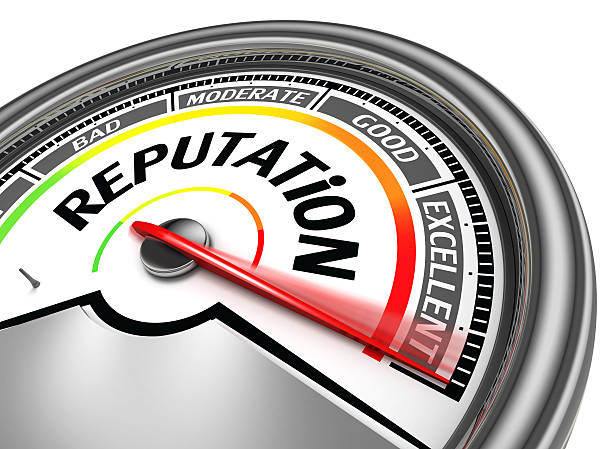Building Strong Organizational Culture: A Guide for Leaders
The Power of Organizational Culture: Why It Matters and How to Develop It
In today’s business environment, organizational culture has become a critical factor in the success of any organization. Organizational culture refers to the shared values, beliefs, and behaviors that define the way people work within an organization. A strong and positive organizational culture can help an organization achieve its goals, improve employee morale and satisfaction, and ultimately lead to greater success.
The leader’s role in developing a strong organizational culture cannot be overstated. The leader is responsible for setting the tone for the organization, establishing the values and beliefs that guide the behavior of employees, and creating an environment in which everyone can thrive.
This article will explore the leader’s role in developing a strong organizational culture. It will begin by providing an overview of organizational culture, including its characteristics and types. It will then delve into the leader’s role in developing a strong organizational culture, including creating a vision for the culture, modeling the desired behaviors, fostering employee engagement, and aligning systems and processes.
The article will also address the challenges that leaders may face in developing an organizational culture and provide strategies for overcoming those challenges. Additionally, it will discuss how to measure and evaluate organizational culture and provide case studies of successful organizational culture development.
Overall, the article will provide leaders with the tools and strategies they need to develop a strong organizational culture that can help their organization achieve its goals and create a positive and rewarding work environment for their employees.
Understanding Organizational Culture
Characteristics of Organizational Culture
Organizational culture is a complex and multifaceted concept that encompasses a wide range of characteristics. At its core, organizational culture is made up of shared values, beliefs, and behaviors that guide the behavior of employees within the organization. Some of the key characteristics of organizational culture include:
-
Shared values: Organizational culture is based on a set of shared values that guide the behavior of employees within the organization. These values can include things like integrity, teamwork, and innovation.
-
Norms and behaviors: Organizational culture is also defined by the norms and behaviors that are accepted and expected within the organization. For example, some organizations may prioritize collaboration and open communication, while others may prioritize individual achievement and competition.
-
Symbols and artifacts: Symbols and artifacts such as logos, slogans, and physical spaces can also be important in shaping organizational culture. They help to reinforce the values and beliefs of the organization and create a sense of identity and belonging among employees.
Types of Organizational Culture
There are several different types of organizational culture, each with its own set of characteristics and priorities. The four main types of organizational culture are:
Clan Culture
Clan culture is a family-like culture in which employees are encouraged to work collaboratively and share common values and beliefs. This type of culture is often found in small organizations or those with a family-owned structure. Clan cultures prioritize employee development and satisfaction, and often have a strong focus on employee engagement.
Adhocracy Culture
Adhocracy culture is a dynamic and innovative culture that prioritizes creativity and risk-taking. This type of culture is often found in start-ups or organizations that are focused on innovation and growth. Adhocracy cultures prioritize flexibility and adaptability, and are often characterized by flat organizational structures and decentralized decision-making.
Market Culture
Market culture is a competitive and results-oriented culture that prioritizes performance and achievement. This type of culture is often found in organizations that operate in highly competitive industries such as finance or consulting. Market cultures prioritize individual achievement and often have a strong focus on results and outcomes.
Hierarchy Culture
Hierarchy culture is a structured and formal culture that prioritizes stability and control. This type of culture is often found in large, bureaucratic organizations such as government agencies or multinational corporations. Hierarchy cultures prioritize efficiency and predictability and often have a strong focus on rules and procedures.
The Impact of Organizational Culture on Employee Behavior and Performance
Organizational culture has a significant impact on employee behavior and performance. A positive and strong organizational culture can improve employee engagement, satisfaction, and performance, while a negative or weak organizational culture can lead to low morale, high turnover, and poor performance.
Organizational culture can also impact other areas of the organization, such as recruitment and retention. Organizations with a strong and positive culture are often able to attract and retain top talent, while organizations with a negative culture may struggle to do so.
Overall, understanding the characteristics and types of organizational culture is critical for leaders who are looking to develop a strong and positive culture within their organization. By understanding the impact of culture on employee behavior and performance, leaders can develop strategies that will help them to create a culture that is aligned with their organizational goals and values.
The Leader’s Role in Developing a Strong Organizational Culture
Creating a Vision for the Culture
The first step in developing a strong organizational culture is to create a clear and compelling vision for the culture. This involves defining the core values and beliefs that will guide the behavior of employees within the organization, and communicating this vision to all employees.
To create a vision for the culture, leaders should consider the following:
-
Defining the Core Values: The first step in creating a vision for the culture is to define the core values that will guide the behavior of employees. These values should be aligned with the organization’s mission and goals, and should reflect the beliefs and priorities of the organization.
-
Communicating the Vision: Once the core values have been defined, it is important to communicate the vision for the culture to all employees. This can be done through a variety of channels, such as company meetings, internal communications, and training sessions. It is important to ensure that all employees understand the vision for the culture and are committed to upholding the core values.
Modeling the Desired Behaviors
Once the vision for the culture has been established, it is important for leaders to model the desired behaviors that are aligned with the core values. Leaders should lead by example and set the standard for behavior within the organization.
To model the desired behaviors, leaders should consider the following:
-
Leading by Example: Leaders should demonstrate the behaviors that are aligned with the core values of the organization. This includes behaviors such as integrity, respect, and teamwork. When leaders model these behaviors, they set the tone for the rest of the organization and create a culture of accountability.
-
Setting Standards for Behavior: Leaders should also set clear standards for behavior within the organization. This includes establishing policies and procedures that are aligned with the core values, and ensuring that all employees understand these standards. By setting clear expectations for behavior, leaders can create a culture of consistency and fairness.
Fostering Employee Engagement
Another important aspect of developing a strong organizational culture is fostering employee engagement. When employees are engaged and invested in the organization, they are more likely to be motivated and committed to upholding the core values of the organization.
To foster employee engagement, leaders should consider the following:
-
Encouraging Input and Feedback: Leaders should create an environment in which employees feel comfortable sharing their ideas and feedback. This can be done through regular meetings, open-door policies, and other channels for communication. When employees feel that their input is valued, they are more likely to be engaged and invested in the organization.
-
Empowering Employees: Leaders should also empower employees to take ownership of their work and contribute to the success of the organization. This can be done through delegation, training and development opportunities, and other initiatives that promote autonomy and accountability.
Aligning Systems and Processes
Finally, developing a strong organizational culture requires aligning systems and processes with the core values of the organization. This includes everything from hiring and selection practices to performance management and rewards.
To align systems and processes, leaders should consider the following:
-
Aligning Hiring and Selection Practices: Leaders should ensure that the hiring and selection practices of the organization are aligned with the core values. This includes selecting candidates who share the values and beliefs of the organization, and ensuring that the interview process is designed to assess these values.
-
Aligning Performance Management and Rewards: Leaders should also ensure that the performance management and rewards systems of the organization are aligned with the core values. This includes setting performance goals that are aligned with the values, and providing rewards and recognition that reinforce these values.
-
Aligning Communication and Information Sharing: Finally, leaders should ensure that communication and information sharing practices are aligned with the core values. This includes creating a culture of transparency and openness, and providing opportunities for employees to share their ideas and feedback. When communication and information sharing practices are aligned with the core values, employees are more likely to feel engaged and invested in the organization.
Overall, the leader’s role in developing a strong organizational culture is critical. By creating a clear vision for the culture, modeling the desired behaviors, fostering employee engagement, and aligning systems and processes, leaders can create a culture that is aligned with the organization’s goals and values. This can lead to improved employee morale and performance, and ultimately greater success for the organization.
Overcoming Challenges in Developing Organizational Culture
Developing a strong organizational culture can be challenging, and leaders may face a number of obstacles along the way. Some of the key challenges that leaders may encounter when developing an organizational culture include resistance to change, lack of resources, and lack of leadership commitment.
Resistance to Change
One of the biggest challenges that leaders may face when developing an organizational culture is resistance to change. Employees may be hesitant to adopt new behaviors and ways of working, particularly if they have been with the organization for a long time.
To overcome resistance to change, leaders should consider the following:
-
Communicating the Vision: Leaders should communicate the vision for the culture and the benefits of the changes to all employees. It is important for employees to understand why the changes are necessary and how they will benefit the organization.
-
Providing Training and Development: Leaders should provide training and development opportunities to help employees develop the skills and knowledge they need to adopt the new behaviors. This can include training on new systems and processes, as well as training on the core values of the organization.
-
Empowering Employees: Leaders should empower employees to take ownership of the changes and contribute to the development of the culture. This can be done through delegation, involvement in decision-making, and other initiatives that promote autonomy and accountability.
Lack of Resources
Another challenge that leaders may face when developing an organizational culture is a lack of resources. Developing a strong culture can require significant time, effort, and financial investment, which may be difficult for some organizations to allocate.
To overcome a lack of resources, leaders should consider the following:
-
Prioritizing Investments: Leaders should prioritize investments in the areas that will have the greatest impact on developing the culture. This may include investments in training and development, hiring and selection practices, or communication and information sharing.
-
Leveraging Existing Resources: Leaders should look for ways to leverage existing resources, such as existing training programs or communication channels, to support the development of the culture. This can help to minimize the financial investment required.
-
Seeking External Support: Leaders may also consider seeking external support, such as consulting or coaching services, to help develop the culture. This can provide additional expertise and support without requiring a significant financial investment.
Lack of Leadership Commitment
Finally, another challenge that leaders may face when developing an organizational culture is a lack of leadership commitment. If leaders are not fully committed to the development of the culture, it can be difficult to gain the buy-in and support of employees.
To overcome a lack of leadership commitment, leaders should consider the following:
-
Leading by Example: Leaders should model the desired behaviors and demonstrate their commitment to the development of the culture. This can help to inspire and motivate employees to do the same.
-
Communicating the Importance: Leaders should communicate the importance of the culture and the benefits of developing a strong culture to all employees. This can help to build support and commitment among employees.
-
Holding Leaders Accountable: Finally, leaders should hold themselves and other leaders accountable for upholding the core values and behaviors that are aligned with the culture. This can help to ensure that everyone is committed to the development of the culture and is working towards the same goals.
By overcoming these challenges, leaders can develop a strong and positive organizational culture that can help their organization achieve its goals and create a positive and rewarding work environment for their employees.
Measuring and Evaluating Organizational Culture
Developing a strong organizational culture is not a one-time event, but an ongoing process that requires continuous evaluation and improvement. Measuring and evaluating organizational culture can help leaders to identify areas for improvement, track progress, and ensure that the culture remains aligned with the organization’s goals and values.
Identifying Key Metrics
The first step in measuring and evaluating organizational culture is to identify key metrics that are aligned with the core values and behaviors of the organization. These metrics can vary depending on the organization and its goals, but some common metrics include:
-
Employee Engagement: Employee engagement is a key indicator of the strength and effectiveness of organizational culture. Engaged employees are more likely to be motivated, productive, and committed to the organization.
-
Turnover Rate: Turnover rate is another important metric that can provide insight into the effectiveness of the organizational culture. High turnover rates may indicate that the culture is not aligned with the needs and expectations of employees.
-
Customer Satisfaction: Customer satisfaction is a key metric for organizations that are focused on providing high-quality products or services. A strong organizational culture can lead to improved customer satisfaction and loyalty.
-
Innovation and Creativity: Innovation and creativity are important metrics for organizations that are focused on growth and development. A strong organizational culture can foster innovation and creativity among employees, leading to new ideas and approaches.
Conducting Surveys and Focus Groups
Once key metrics have been identified, leaders can use surveys and focus groups to gather feedback from employees and evaluate the strength of the organizational culture. Surveys can be used to measure employee engagement, satisfaction, and alignment with the core values and behaviors of the organization. Focus groups can be used to gather more in-depth feedback on specific issues or areas of concern.
When conducting surveys and focus groups, leaders should consider the following:
-
Ensuring Anonymity: It is important to ensure that employees feel comfortable providing honest feedback. Surveys and focus groups should be conducted anonymously to encourage open and honest feedback.
-
Asking Relevant Questions: Surveys and focus group questions should be relevant to the goals and values of the organization. They should also be designed to elicit specific feedback that can be used to improve the culture.
-
Acting on Feedback: It is important to act on the feedback that is received through surveys and focus groups. Leaders should identify areas for improvement and develop strategies for addressing these issues.
Using Data to Drive Change
Finally, leaders should use the data collected through surveys and focus groups to drive change and improve the organizational culture. This may involve developing new training programs, revising policies and procedures, or implementing new systems and processes that are aligned with the core values and behaviors of the organization.
When using data to drive change, leaders should consider the following:
-
Setting Clear Goals: It is important to set clear goals for improvement based on the data collected. These goals should be specific, measurable, and aligned with the core values and behaviors of the organization.
-
Developing Action Plans: Leaders should develop action plans that outline specific strategies for achieving the goals identified. These action plans should include timelines, resources, and responsibilities.
-
Monitoring Progress: Finally, leaders should monitor progress and track the impact of the changes that are implemented. This can help to ensure that the changes are effective and aligned with the goals and values of the organization.
By measuring and evaluating the organizational culture, leaders can identify areas for improvement, track progress, and ensure that the culture remains aligned with the goals and values of the organization. This can lead to improved employee morale, satisfaction, and performance, and ultimately greater success for the organization.
Sustaining a Strong Organizational Culture
Developing a strong organizational culture is an ongoing process, and sustaining that culture requires consistent effort and attention from leaders. Once a strong culture has been developed, it is important to ensure that it remains strong and continues to align with the goals and values of the organization.
Communicating the Culture
One of the keys to sustaining a strong organizational culture is effective communication. Leaders should communicate the culture and its core values consistently and frequently to all employees. This can be done through a variety of channels, such as company meetings, internal communications, and training sessions. It is important to ensure that all employees understand the culture and are committed to upholding the core values.
When communicating the culture, leaders should consider the following:
-
Reinforcing the Core Values: Leaders should reinforce the core values of the organization through consistent communication and behavior. This can help to ensure that the culture remains strong and aligned with the goals and values of the organization.
-
Providing Examples: Leaders should provide examples of how the core values are being demonstrated in the organization. This can help to reinforce the importance of the values and demonstrate their impact on the organization.
-
Encouraging Feedback: Leaders should encourage feedback from employees on the culture and its core values. This can help to identify areas for improvement and ensure that the culture remains relevant and effective.
Leading by Example
Another key to sustaining a strong organizational culture is leading by example. Leaders should model the desired behaviors and demonstrate their commitment to the development of the culture. This can help to inspire and motivate employees to do the same.
When leading by example, leaders should consider the following:
-
Consistency: Leaders should demonstrate the desired behaviors consistently over time. This can help to reinforce the culture and ensure that it remains strong.
-
Visibility: Leaders should ensure that their behavior is visible to all employees. This can help to reinforce the importance of the culture and demonstrate its impact on the organization.
-
Accountability: Leaders should hold themselves and others accountable for upholding the core values and behaviors that are aligned with the culture. This can help to ensure that everyone is committed to the development of the culture and is working towards the same goals.
Fostering a Culture of Continuous Improvement
Finally, sustaining a strong organizational culture requires a culture of continuous improvement. Leaders should be open to feedback and committed to making changes and improvements to the culture as needed. This can help to ensure that the culture remains relevant and effective over time.
To foster a culture of continuous improvement, leaders should consider the following:
-
Encouraging Feedback: Leaders should encourage feedback from employees on the culture and its core values. This can help to identify areas for improvement and ensure that the culture remains relevant and effective.
-
Taking Action: Leaders should take action on the feedback received and make changes and improvements to the culture as needed. This can help to ensure that the culture remains aligned with the goals and values of the organization.
-
Celebrating Success: Leaders should celebrate successes and achievements related to the culture. This can help to reinforce the importance of the culture and demonstrate its impact on the organization.
By communicating the culture, leading by example, and fostering a culture of continuous improvement, leaders can sustain a strong organizational culture over time. This can lead to improved employee morale, satisfaction, and performance, and ultimately greater success for the organization.
Case Studies of Successful Organizational Culture Development
Examining case studies of successful organizational culture development can provide insight into the strategies and practices that have been effective for other organizations. Three organizations that have been particularly successful in developing and sustaining strong organizational cultures are Southwest Airlines, Zappos, and Patagonia.
Southwest Airlines
Southwest Airlines is a U.S. airline that has consistently been ranked as one of the best places to work. The company has a strong culture that is built around its core values of low fares, customer service, and employee engagement. Southwest Airlines has developed a number of strategies to build and sustain its culture, including:
-
Hiring for Culture Fit: Southwest Airlines places a strong emphasis on hiring employees who are a good fit for the company’s culture. This involves not only assessing candidates’ skills and experience, but also their values and personality traits.
-
Fostering Employee Engagement: Southwest Airlines has a number of programs and initiatives in place to foster employee engagement, including profit-sharing, employee recognition programs, and opportunities for career development.
-
Emphasizing Communication: Southwest Airlines places a strong emphasis on communication, both internally and externally. The company’s leaders communicate regularly with employees to keep them informed about the company’s goals and strategies, and employees are encouraged to provide feedback and ideas.
Zappos
Zappos is an online shoe and clothing retailer that has also been ranked as one of the best places to work. The company has a strong culture that is built around its core values of delivering happiness, pursuing growth and learning, and building open and honest relationships with communication. Zappos has developed a number of strategies to build and sustain its culture, including:
-
Emphasizing Customer Service: Zappos places a strong emphasis on customer service and ensuring that customers are satisfied with their experiences. This focus on customer service has helped to build a culture of customer-centricity and a strong commitment to delivering happiness.
-
Encouraging Employee Autonomy: Zappos encourages employees to take ownership of their work and make decisions that are aligned with the company’s core values. This focus on autonomy has helped to foster a culture of innovation and creativity.
-
Investing in Employee Development: Zappos invests heavily in employee development, offering a number of training and development programs to help employees develop the skills and knowledge they need to succeed. This focus on development has helped to foster a culture of growth and learning.
Patagonia
Patagonia is an outdoor clothing and gear company that has been widely recognized for its commitment to sustainability and environmentalism. The company has a strong culture that is built around its core values of environmental stewardship, quality, and transparency. Patagonia has developed a number of strategies to build and sustain its culture, including:
-
Emphasizing Sustainability: Patagonia places a strong emphasis on sustainability and ensuring that its products and operations are environmentally responsible. This focus on sustainability has helped to build a culture of environmental stewardship and a strong commitment to corporate social responsibility.
-
Encouraging Employee Activism: Patagonia encourages employees to get involved in environmental activism and to use their skills and expertise to make a positive impact on the world. This focus on activism has helped to foster a culture of social responsibility and a strong commitment to making a difference.
-
Emphasizing Transparency: Patagonia is committed to transparency in its operations and its supply chain. The company is open about its practices and policies, and works to ensure that its suppliers and partners share its commitment to environmental and social responsibility. This focus on transparency has helped to build a culture of honesty and integrity.
By examining these case studies, we can see that there is no one-size-fits-all approach to developing a strong organizational culture. Organizations must develop strategies and practices that are aligned with their goals, values, and unique circumstances. Patagonia’s success in building a strong culture based on sustainability, activism, and transparency serves as an inspiration for other organizations to create their own unique culture that aligns with their values and goals.
Patagonia’s emphasis on sustainability has not only helped to build a culture of environmental stewardship but also a competitive advantage in the industry. By prioritizing sustainable practices, Patagonia has attracted customers who share the company’s values and are willing to pay a premium for sustainable products. This demonstrates how developing a strong organizational culture can lead to both internal benefits, such as improved employee engagement and morale, and external benefits, such as increased customer loyalty and profitability.
Overall, Patagonia’s success in developing a strong culture based on sustainability, activism, and transparency serves as a powerful example of how a company can align its culture with its values and achieve success in both its internal and external operations.
Sustaining a Strong Organizational Culture: Strategies for Long-Term Success
Organizational culture plays a critical role in the success of any organization. A strong culture can help to attract and retain talented employees, improve performance and productivity, and create a positive and rewarding work environment. Developing and sustaining a strong organizational culture requires consistent effort and attention from leaders, as well as a commitment to continuous improvement.
Leaders can develop a strong organizational culture by defining and communicating the core values and behaviors that are aligned with the goals and values of the organization. They can then foster that culture by leading by example, empowering employees, and investing in training and development. Measuring and evaluating the culture can help leaders to identify areas for improvement and ensure that the culture remains aligned with the goals and values of the organization.
By examining case studies of successful organizational culture development, we can see that there is no one-size-fits-all approach to developing a strong culture. Organizations must develop strategies and practices that are aligned with their goals, values, and unique circumstances.
In the end, developing and sustaining a strong organizational culture requires a commitment from all levels of the organization, from the leaders to the front-line employees. It requires a culture of open communication, accountability, and continuous improvement. By building and sustaining a strong organizational culture, organizations can create a positive and rewarding work environment, attract and retain talented employees, and achieve their goals and objectives.






